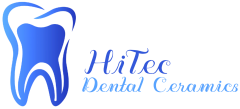Many practitioners ask how to seat crowns that fit accurately and consistently with minimal chairside adjustment. This is crucial for efficiency, longevity, and patient satisfaction. Here’s a breakdown of key strategies across clinical and lab stages to help ensure reliable crown seating every time:
1. Ideal Tooth Preparation
•Taper: Maintain 6–10° total occlusal convergence (TOC). Excessive taper leads to poor retention; too little causes seating issues.
•Margin Design: Choose based on material (e.g., chamfer for zirconia or PFM; shoulder for all-ceramic like E.max).
•Smoothness: Ensure all internal line angles are rounded and surfaces are smooth to avoid internal binding.
•Finish Line Clarity: Clearly defined and continuous margins help the lab fabricate accurately fitting crowns.
2. Effective Tissue Management and Retraction
•Use a cord technique, Expasyl, or laser to expose margins clearly.
•Prevent bleeding and moisture—fluid control is essential for accurate impression or scan capture.
•Consider double-cord technique: one cord to displace, one to reveal.
3. High-Quality Impression or Digital Scan
•If using PVS impressions: No voids, clear margins, proper tray selection, and adhesive use.
•If digital scanning: Retract tissue properly, dry the area, and ensure complete 360° margin capture.
•Check the scan immediately to catch errors.
4. Laboratory Communication
•Send clear instructions: margin location, desired material (e.g., zirconia, E.max), occlusal scheme, shade, and desired contact tightness.
•Ask for die spacer settings (typically 30–50 µm)—allows space for cement but prevents a loose fit.
•Request photos or bite records if occlusion is complex.
5. Try-In Protocol
•Evaluate contacts before cementation: Use floss, articulating paper, and shimstock.
•If crown won’t seat:
•Use disclosing wax, Fit Checker, or Occlude spray to reveal high spots.
•Focus on intaglio surface and internal line angles.
•Adjust only minimally. Excessive grinding risks ruining the fit or strength.
6. Cementation Technique
•Clean both the crown and tooth surface.
•Select appropriate cement (resin-modified glass ionomer, etc).
•Follow manufacturer’s etching, priming, and bonding protocols.
•Seat with consistent pressure and verify full seating before curing.
7. Post-Op Occlusion & Contacts Check
•After cementing, recheck occlusion with articulating paper and verify centric and excursive contacts.
•Adjust carefully to avoid high spots that could lead to fracture or sensitivity.
Summary Checklist for Predictable Crown Seating:
A.Prep – Adequate reduction, 6–10° taper, smooth margins
B.Retraction – Double-cord or laser, dry field
C.Impression – Accurate margins, moisture-free
D.Lab – Clear instructions, proper die spacer
E.Try-in – Use Fit Checker/Occlude, minimal internal adjustments
F.Cement – Clean, dry, proper technique, full seating verified
G.Occlusion – Check post-cementation in all excursions
